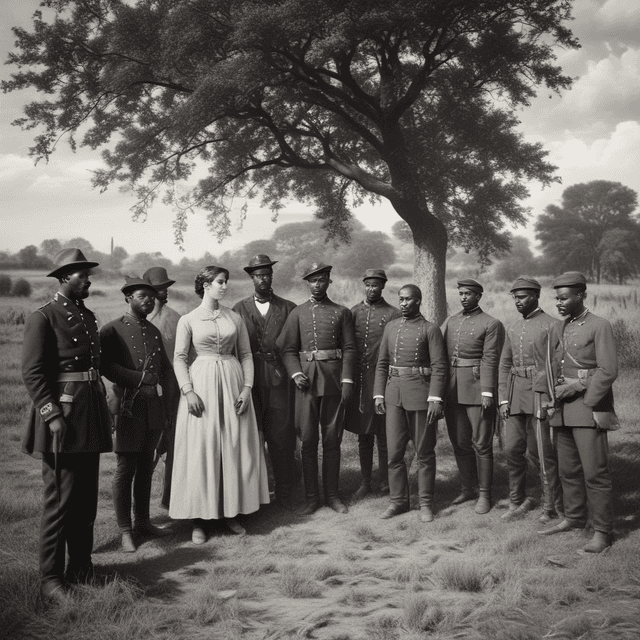
| Focus | Dismantle slavery, establish civil rights, integrate freed slaves |
| Led by | Republican-controlled Congress |
| Period | 1865 - 1890 |
| Challenges | Backlash from white supremacist groups |
| Key Outcomes | Rise of prosperous Black middle class in the South • Racial equality reforms laid groundwork for future progress |
The Reconstruction era was a pivotal period in American history that lasted from the end of the American Civil War in 1865 to 1890. Driven by the Republican Party-controlled United States Congress, Reconstruction represented an ambitious attempt to fundamentally transform the country's economy, society, and political structures in the wake of the conflict.
Following the Union victory in the Civil War, President Abraham Lincoln articulated a moderate plan for Reconstruction that aimed to rapidly reintegrate the Confederate states back into the Union. Lincoln's vision centered on a "soft" approach that would offer pardons to most former Confederates and allow them to quickly regain political power in their states.
However, Lincoln's assassination in 1865 led to a shift in Reconstruction policy under his successor, Andrew Johnson. Deeply opposed to empowering freed slaves, Johnson clashed with the Radical Republican Congress over the course of Reconstruction. This conflict set the stage for a more confrontational and transformative phase of the process.
Overriding Johnson's vetoes, Congress passed a series of landmark laws that dramatically reshaped the South and the country as a whole:
To enforce these reforms, Congress also created the Freedmen's Bureau to provide food, education, and legal assistance to freed slaves. Martial law was imposed in the South, and federal troops were deployed to protect the rights of African Americans and suppress white supremacist violence.
These Radical Reconstruction policies had a profound impact on Southern society. Newly enfranchised Black voters elected thousands of African Americans to state and local offices, including 16 to the US Congress. Several states, such as South Carolina and Louisiana, even elected Black governors during this period.
The federal government also invested heavily in educating freed slaves through the establishment of historically Black colleges and universities. This catalyzed the rise of a prosperous Black middle class in the South, with growing businesses, churches, and community institutions.
However, Reconstruction faced fierce resistance from conservative white Southerners who sought to maintain the racial hierarchy of the antebellum period. Paramilitary groups like the Ku Klux Klan engaged in widespread violence and intimidation to suppress Black voting and political power.
By the 1870s, as northern Republican support for Reconstruction waned, federal troops were gradually withdrawn from the South. This enabled Southern Democrats to regain control of state governments and begin dismantling the civil rights gains of the previous decades through Jim Crow laws and other discriminatory policies.
Despite the ultimate rollback of many Reconstruction reforms, the era left a profound and lasting impact on American society. It represented the first attempt to fundamentally restructure the relationship between the federal government and the states, as well as between the races, since the nation's founding.
The rights and protections established during Reconstruction, however briefly, served as a crucial foundation for the civil rights movement of the 20th century. And the experience of African Americans participating in electoral politics, education, and economic advancement laid the groundwork for the rise of a robust Black middle class in the decades to come.
While the vision of Reconstruction was not fully realized, it nonetheless stands as a pivotal chapter in the long and ongoing struggle for racial justice and equality in the United States.